How and when is it better to transplant clematis in the fall or spring to a new place
Clematis are decorative lianas that can grow in one place for many years. But sometimes it happens that they need to be removed from one territory and transplanted to another. The material will help inexperienced growers figure out how to properly transplant clematis to a new place in the fall, as well as what agrotechnical methods must be applied in this case.
When does clematis need a transplant?
Clematis have a deep root system, and they are difficult to tolerate a transplant. This is especially true for hybrids with a pivotal root system. Therefore, experts recommend planting vines immediately in their designated place. But in some cases, clematis requires a transplant.
These include:
- the vine has grown too much, the flowers begin to shrink;
- the soil is depleted;
- the plant was purchased in a pot and needs to be transplanted into the open ground;
- clematis has undergone a disease, begins to fade;
- due to the growth of neighboring plants, sunlight does not enter the liana;
- the landing site was chosen randomly.
In addition, transplanting is sometimes necessary when changing the design of the garden, or when carrying out construction work.
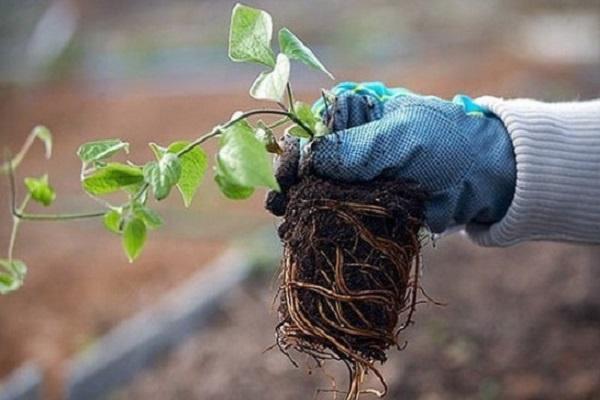
Annual transplant
One year old seedlings are purchased in the garden center, starting in spring. If grown in a pot, they can be planted from spring to fall. Transplanting an annual to another place is easily transferred by him, because the younger the plant, the easier it is to adapt to new conditions of detention.
Note! In the first year, flowers at clematis must be cut off so that all the plant's forces are spent on building the root system and powerful shoots.
Transplanting a young plant
Young clematis has not yet grown a sufficient number of roots for good wintering, therefore, it is preferable to replant it in the spring. During the summer, its underground and aboveground parts will ripen well, and next season it will delight the gardener with its abundant flowering. Grown in a greenhouse, unhardened plants are planted after the threat of frost has passed.
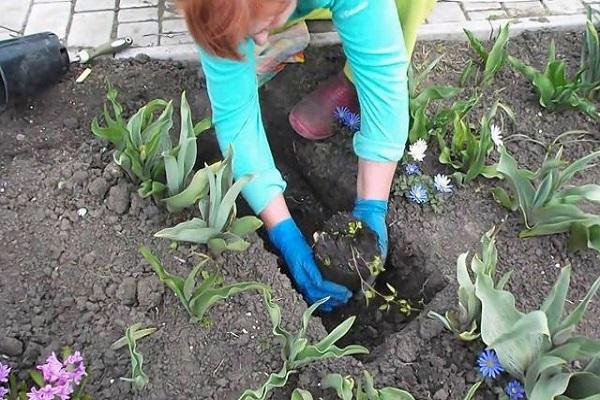
Transplanting an adult plant
Liana, growing for a long time in the same place, must be divided into several parts and transplanted. If this is not done, then all the vegetative parts of it will begin to shrink, since they will not have enough space for development. When transplanting an adult plant, a support must be placed.It must be strong, since the weak can not withstand the powerful shoots of the plant.
When is it better to transplant clematis?
There is no definite answer to this question. Each grower, based on his experience, proves the benefits of planting at one time or another during the season. The survival rate of transplanted clematis largely depends on the region, as well as on the growing conditions of the plant in a particular area.
Good illumination of the site, protection from winds, air-permeable soil will contribute to the rapid rooting of the vine. The main condition for planting and transplanting clematis is that the procedure should be performed no later than a month before the first frost.
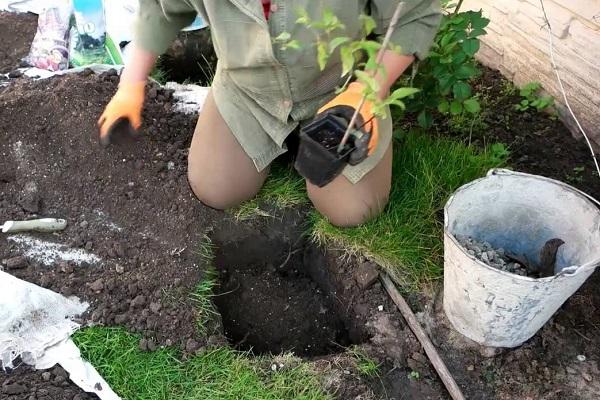
Benefits of a spring transplant
Clematis has an early growing season, so it must be planted when the buds have not yet started to grow. In what month in spring is it best to carry out this procedure? The advantages of planting in April are obvious, since the transplanted plant will have time to adapt in a new place, and the whips will mature and not freeze in cold winter.
Transplanting clematis in the spring is recommended for the northern regions.
When is a priority transplant in the fall?
You can plant clematis in autumn in regions with mild winters. But so that the root system does not freeze, it is necessary to choose the right planting month. When is the priority transplanting in the fall - in September or October? More preferable - the entire first autumn month and the beginning of the next. Before the onset of frost, the root circle is sprinkled with a layer of dry leaves, crushed bark or other mulching material.
Summer transplant pitfalls
Summer is not the best time to transplant plants. This period is intended for bright flowering, and the pitfalls of a summer transplant (in August) for clematis are that their life cycle is lost. Clematos grown in a pot and having a closed root system will relatively easily tolerate the procedure.
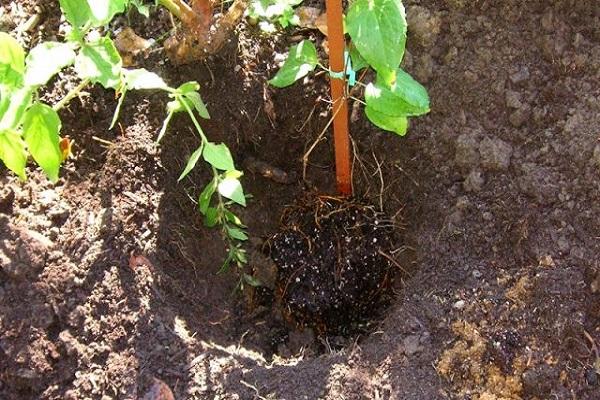
Required tools
In whatever period the transplant is made, the gardener will need tools. Here is a list of them:
- shovel for digging in an earthen clod;
- digging forks;
- secateurs for trimming lashes, for summer and autumn transplantation;
- garden saw or hatchet for dividing the roots of an adult plant.
Important! To prevent the plant from contracting fungal diseases, the tools are disinfected before work.
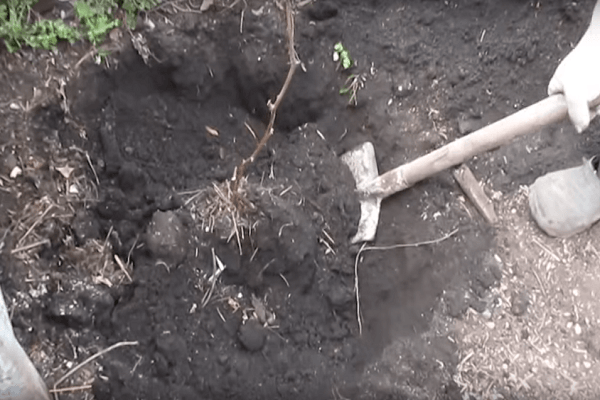
Transplant stages
In order for the transplant to be as painless as possible for the plant, you must carefully prepare for the procedure. There are several stages, we will tell you more about each of them.
Choosing the right place
Clematis are photophilous, so the planting site should be brightly lit by the sun throughout the day. If there is a lack of light, plants may not start flowering. The landing site should not be flooded with water in the rain, so it is determined at a distance of at least 50 centimeters from the walls of buildings. Highly located groundwater will be destructive. The site on which clematis will be planted should not be blown by the wind: because of this, the lashes will not be able to hold onto the support.
Site preparation
The territory is cleared of garbage and weeds. If the groundwater is located close to the surface of the earth, then drainage ditches must be made so that excess water flows down them. Simultaneously with the digging of the planting hole, supports are installed. This must be done in advance so that the integrity of the root system is not compromised in the future.
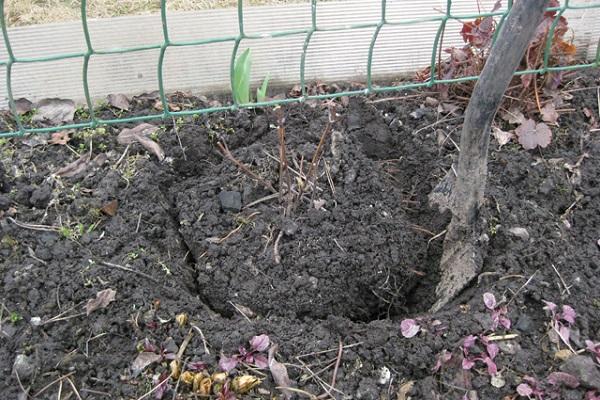
Pit preparation
The landing pit is dug 60 × 60 centimeters in size. Drainage is laid at its bottom, consisting of broken bricks, sand, crushed stone. To make the soil more fertile, add 100 grams of mineral dressing to it. If acidity is present, it is neutralized with dolomite flour.
Transplant process
Having correctly chosen the landing site, carefully preparing the site, digging a hole, they begin the process of transplanting clematis. Its disembarkation takes place in several steps:
- The prepared pit is half filled with the substrate so that its top is located in the form of a slide.
- At this top, the roots of clematis are gently straightened, then the plant is covered with the remains of soil. The older the clematis, the deeper its trunk. This will stimulate tillering and will also protect the plant from frost.
- The planted clematis is watered abundantly.
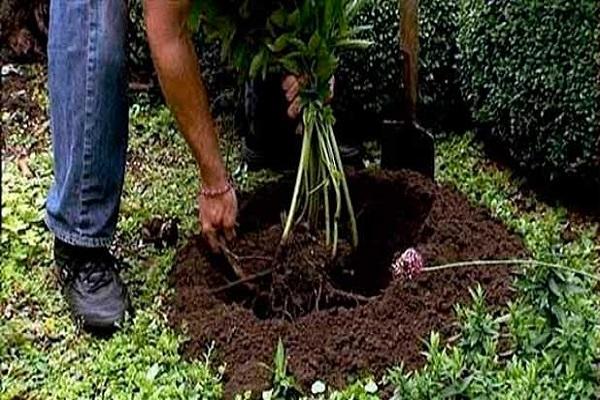
The planting site is mulched with peat. It will protect the soil from drying out, the roots - from hypothermia and overheating.
Advice! Since the root system suffers from overheating of the soil, some annuals, for example, marigolds, can be planted with clematis.
How to care for clematis after transplant
Clematis care consists in timely watering, loosening the soil, and cleaning weeds. When transplanting clematis in the spring, all peduncles formed that year are removed. This is necessary in order for the plant to direct all its forces towards rooting and growth. Starting next season, clematis begin to feed. In cold regions, shelter for the winter is required already in October.
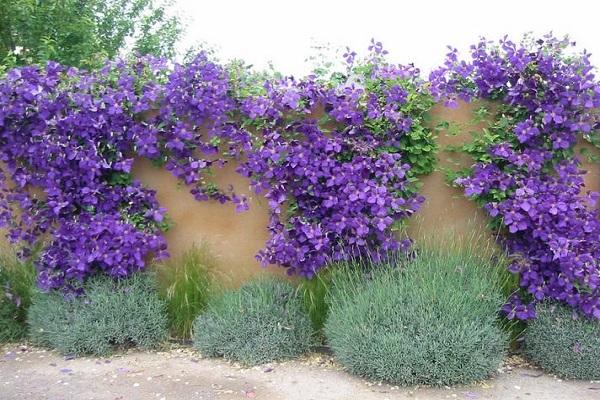
Having figured out the nuances of transplanting clematis, the gardener will be able to admire their flowering next year. Proper care will ensure the growth of clematis in one place for a long time. Growing up, they will radically change the appearance of the garden plot, decorate work buildings, and decorate the gazebo with whips.

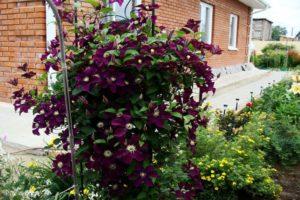






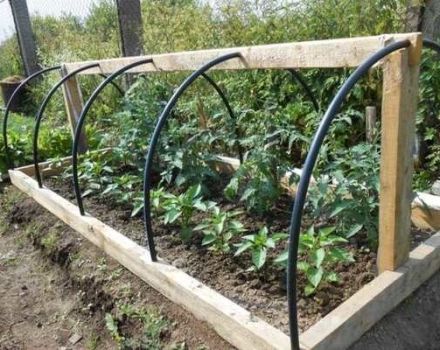

Thank! Good article. Everything is detailed about autumn and spring.